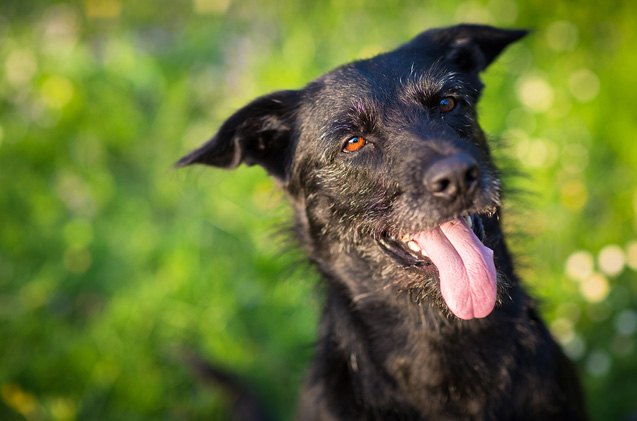Tapeworms In Dogs Are More Than A Sticky Situation

If the thought of a long, disgusting worm growing in your dog’s belly frightens you, then you may want to take the time to learn how to make sure it doesn’t happen. Tapeworms in dogs are fairly common and there are a variety of different types. For the most part, these infections are treatable but, if you don’t catch the infection soon enough, your dog could end up suffering some unpleasant symptoms. Let’s go over the basics about tapeworms in dogs, including causes, symptoms, and treatment options.
Related: The Low-Down On Roundworms In Dogs
Types of Tapeworm Infections
Dogs can be infected by tapeworms if they swallow a flea that has consumed fertilized tapeworm eggs. A tapeworm is a type of flatworm that is segmented into different parts and certain parts of the tapeworm have suckers that enable the worm to attach to the lining of a dog’s intestine. All tapeworms belong to the cestode family, but there are different species which can infect both cats and dogs. Some of the most common types of tapeworms that are known to infect dogs include:
- Taenia
- Echinococcus granulosus
- Dipylidium caninum
- multiocularis
- Spirometra mansonoides
- Diphyllobothrium latum
The most common tapeworm found in dogs, by far, is Dipylidium caninum. Adult worms of this species can grow to as long as 8 inches in length, though other tapeworms can grow as long as 28 inches. As the tapeworm grows, segments of its body fall off and pass through your dog’s body in his feces – each segment measures about 1/8th inch long and they look similar to grains of rice. After being passed from the dog’s body, these segments dry out and crack open, spreading fertilized eggs. Fortunately, a dog cannot be infected by being exposed to these fertilized eggs – they must first pass through the body of a flea before they can infect another dog.
Related: How To Get Rid Of Fleas On Dogs
Tapeworms in Dogs Symptoms
One of the most common ways pet owners recognize tapeworm infections is by seeing the passed segments of the tapeworm in their dog’s feces – you may also find them on your dog’s backside or in his bedding. Other symptoms of tapeworm infections may include biting or licking the anus, dragging the backside on the ground in response to itching and irritation, and, in some cases, vomiting. As the tapeworm segments dry, they may turn golden yellow in color so keep an eye out for rice-like grains in your dog’s feces as well as golden-colored grains.
How to Prevent and Treat Tapeworms in Dogs
For the most part, tapeworm infections in dogs are not particularly serious. In puppies, however, a severe infestation can lead to stunted growth and intestinal blockages. Once your veterinarian has diagnosed the infection he will likely treat your dog with some kind of parasiticide – these drugs are safe and typically do not cause side effects. The best way to prevent tapeworm infections is to protect your dog from fleas. A topical flea and tick preventive will work wonders in preventing flea infestations.
Can Tapeworms in Dogs Transfer to Humans?
Because the tapeworm is transmitted to dogs via fleas, it’s difficult for it to be transferred to humans. Even though transfer is rare, children are at an increased risk to become infected.
Tapeworm infections may not be serious but they can cause your dog some discomfort and, in puppies, they may lead to stunted growth. Protect your dog against tapeworm infections by controlling fleas in and around your home.

Kate Barrington is the loving owner of two cats (Bagel and Munchkin) and a noisy herd of guinea pigs. Having grown up with golden retrievers, Kate has a great deal of experience with dogs but labels herself a lover of all pets. Having received a Bachelor's degree in English, Kate has combined her love for pets and her passion for writing to create her own freelance writing business, specializing in the pet niche.
More by Kate Barrington























